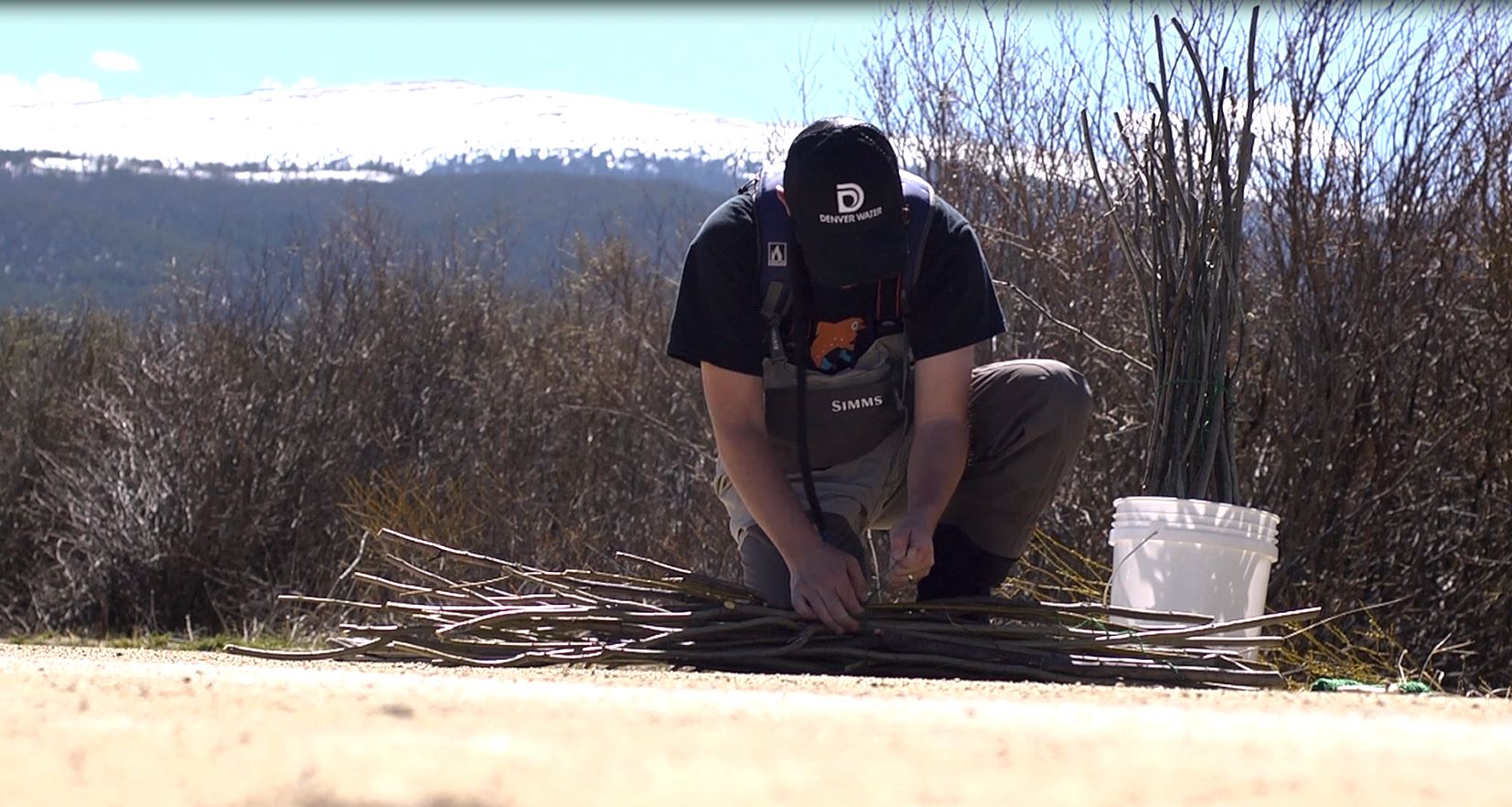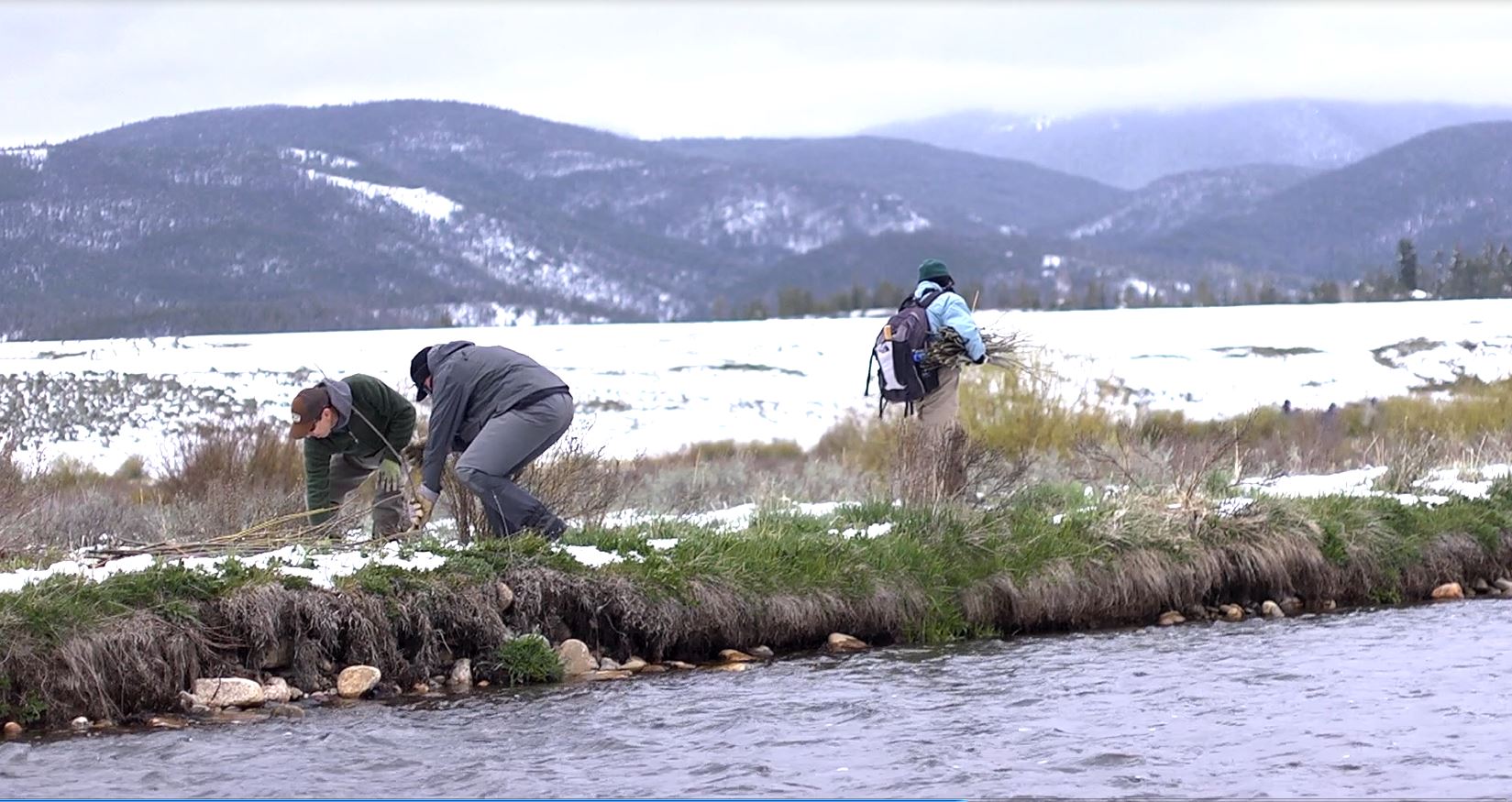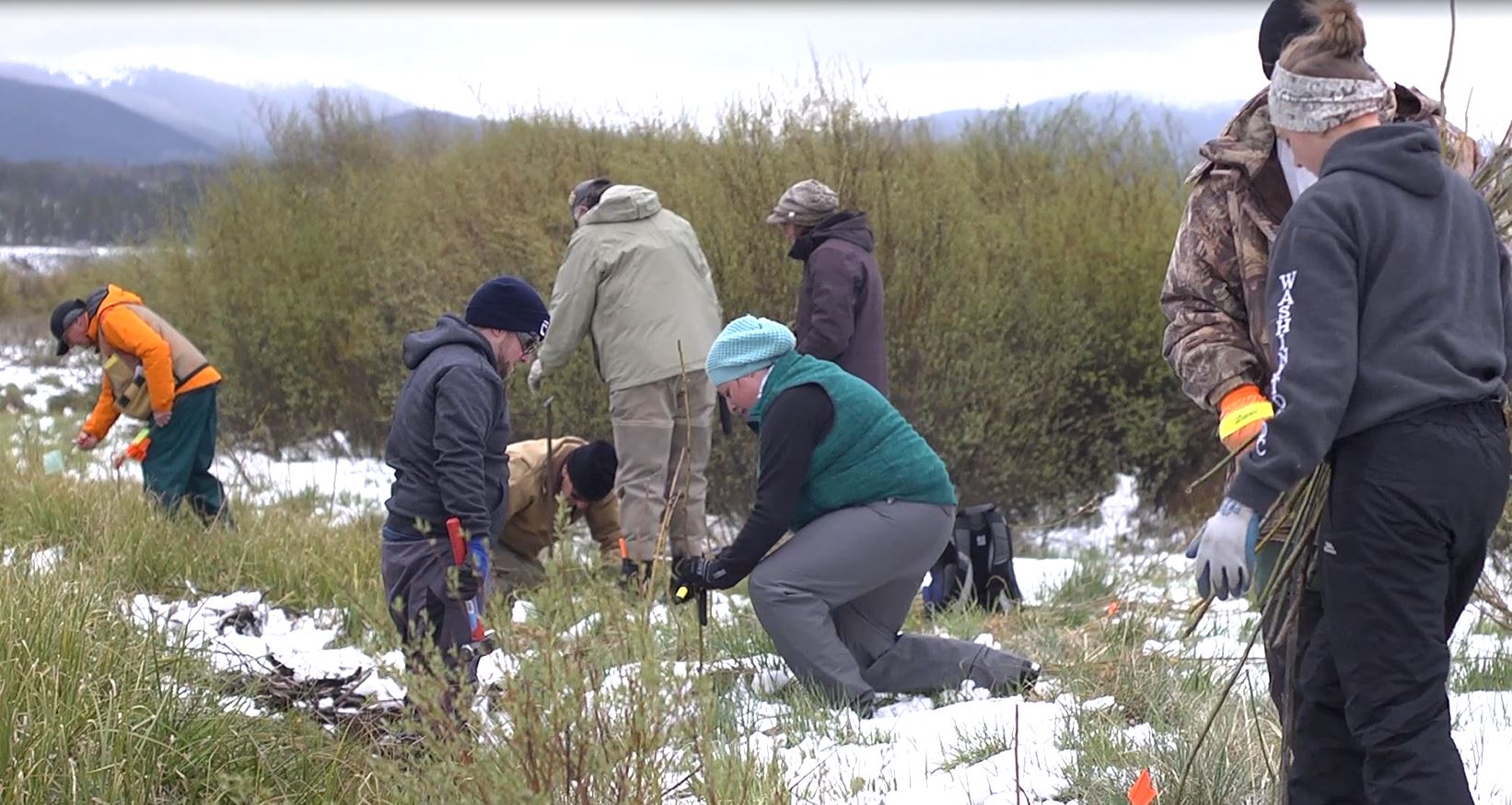
Keep it cool: Good for the Fraser River and its trout
Armed with clippers, buckets and shovels, a team of 150 volunteers came together over two weekends in May with one common goal: restore shade to the Fraser River in Grand County.
Volunteers harvested 3-foot sections from willow bushes in the Fraser River Valley on May 6, and planted the cuttings two weeks later along a 0.9-mile stretch of the river known as the Fraser Flats. These cuttings will take root and grow into new plants this summer.
The group also planted plugs of Kremmling cottonwoods from the Middle Park Conservation District nursery.
Once the willows and trees grow, they will stabilize the river banks and provide shade that will help keep the river cooler and healthier for fish, according to Kirk Klancke, Trout Unlimited Colorado River Headwater’s Chapter president.
“Temperature is one of the greatest forms of pollution we have up here in these high-altitude streams,” Klancke said. “We are now seeing temperatures warm enough to kill trout.”
The willow and cottonwood planting is the first phase of the Fraser Flats River Habitat Project and the first collaborative restoration project for Learning by Doing — a partnership between East and West Slope water stakeholders aimed at enhancing rivers and streams in Grand County.
The volunteer group included members of Trout Unlimited, Denver Water, residents from Fort Collins to Grand County, and people from water organizations on both sides of the Continental Divide.
“It was a great experience working together to help the Fraser,” said Jeremy Jordan, a volunteer from Denver Water. “I learned how doing something as simple as planting small willow stakes can make a big difference in the health of the river.”
The health of the popular trout-fishing stream has declined over the past 100 years for several reasons: cattle grazing on vegetation that once shaded the river, stream channel straightening done to make the river flow faster for logging operations, and water diversions used for irrigation and Front Range water supply.
The harvested willows will grow quickly, and the new plantings are expected to start budding in late-June, said Anna Drexler-Dreis, master's candidate at Western State University and Fraser Flats project coordinator.
“I can’t wait to see what happens,” said Drexler-Dreis. “I really hope that in five to 10 years there are a bunch of willows established here, and we see more shade and a better habitat for the fish and bugs.”
The second phase of the restoration project begins in September.
“We’re going to work on the stream channel and create additional habitat features in the river,” said Jessica Alexander, Denver Water environmental scientist. “The new features combined with shade from the willows and cottonwoods will create a better habitat for trout as well as the insects that are critical to a healthy fishery.”
Denver Water is part of the Learning by Doing cooperative effort and has contributed $50,000 to Grand County for the Fraser Flats restoration.
Denver Water has also committed nearly $4 million to fund similar water quality and watershed health projects in Grand County. The additional funding will be released once the federal permitting process for the Gross Reservoir Expansion Project has been completed.
“For decades, people on both sides of the divide have argued over this river, now we’re actually doing something together,” Klancke said. “When the West Slope gains a healthy river and the Front Range maintains its water supply, what we have is one Colorado and that’s good for all of us.”



